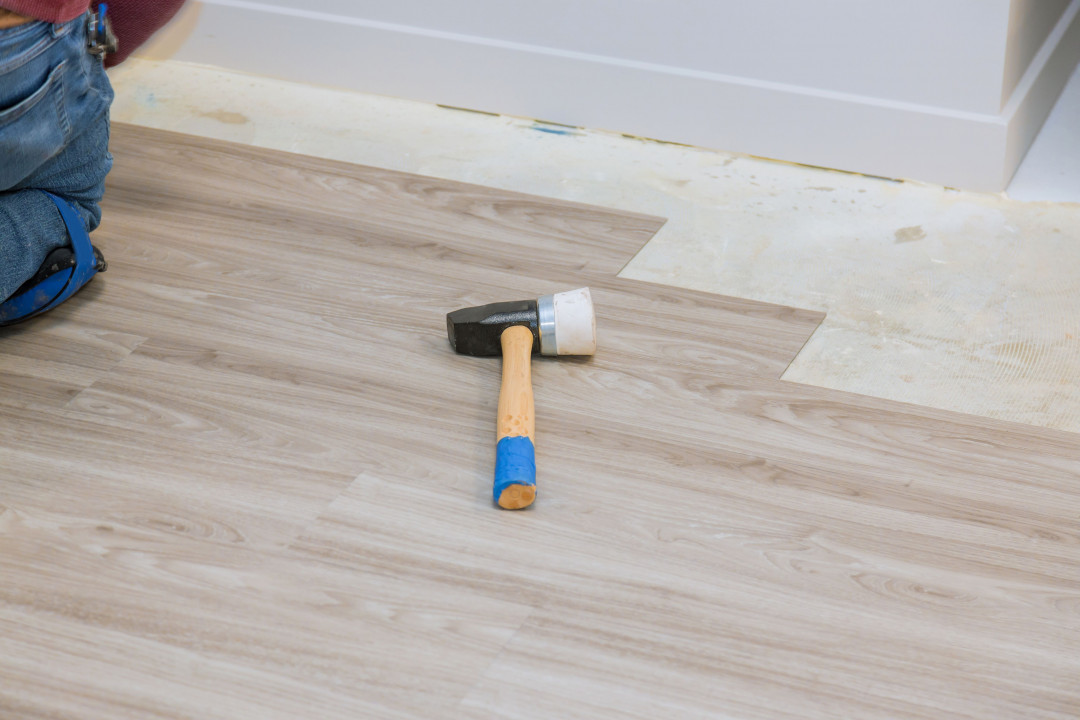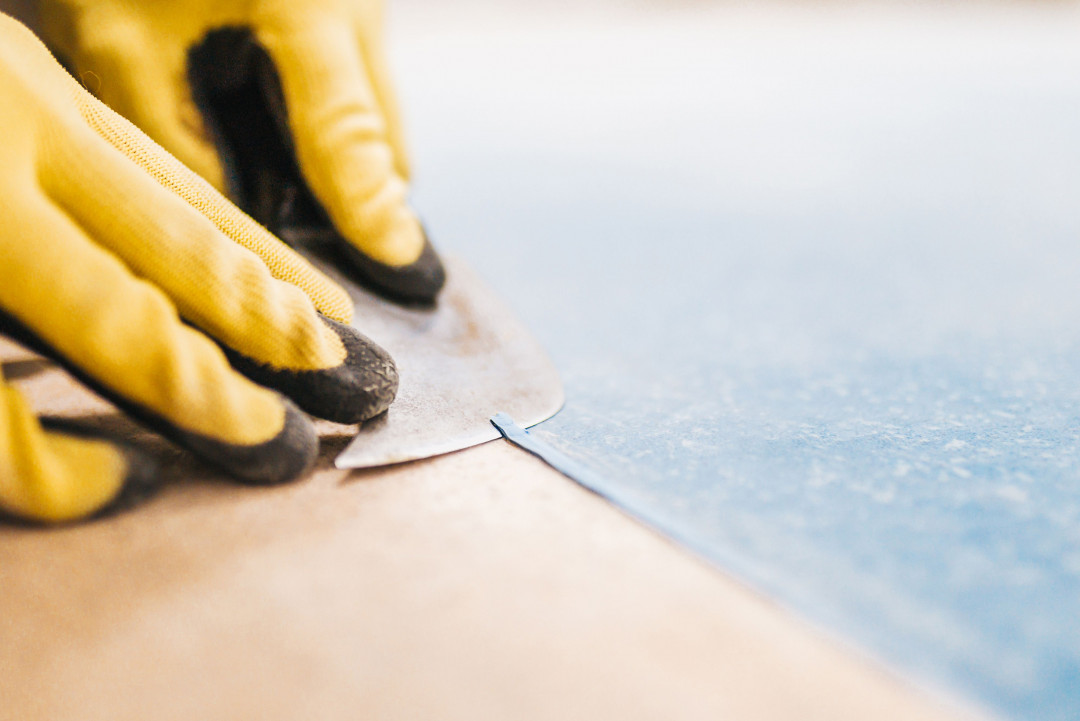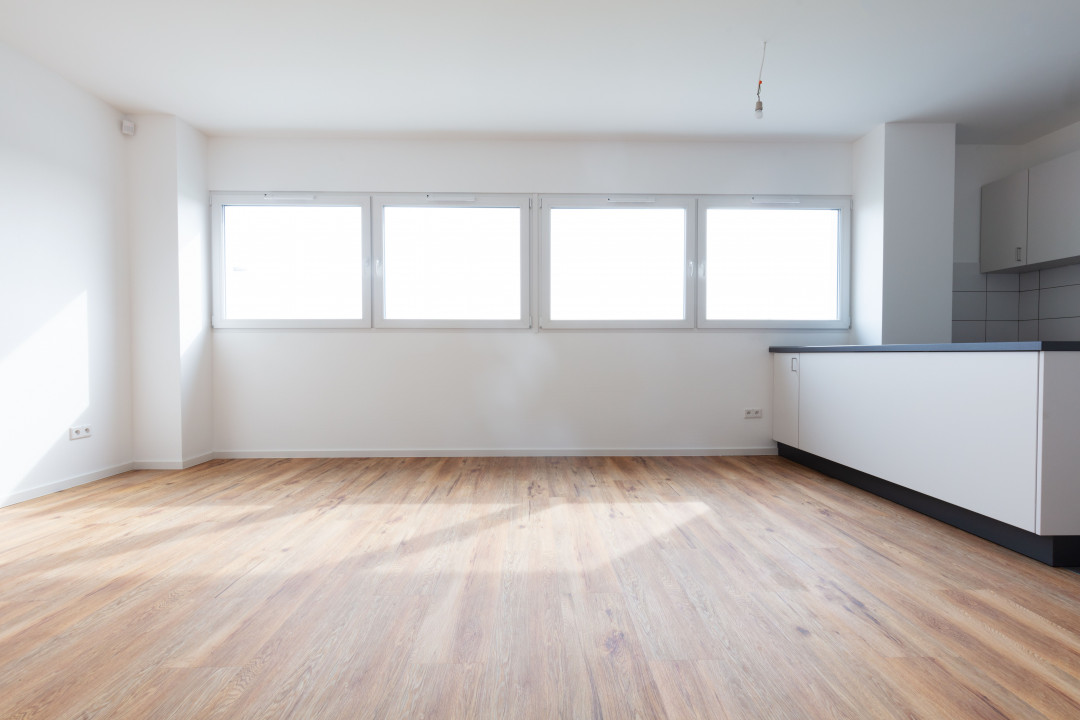Unveiling the Versatility of Vinyl Flooring: A Comprehensive Guide for Design Professionals and Architects




In the dynamic world of interior design and architecture, flooring plays a pivotal role in shaping the aesthetics and functionality of a space. Among the myriad flooring options available, vinyl flooring has emerged as a versatile and popular choice.
Today, vinyl has undergone a remarkable transformation, emerging as a versatile, chic, and durable alternative that caters to a myriad of design preferences and lifestyle demands. From mimicking the natural allure of hardwood to replicating the sleek elegance of stone, vinyl flooring has become a canvas for creative expression in interior spaces.
Why Choose Vinyl Flooring?
The allure of vinyl extends beyond its aesthetic appeal. As we navigate through the flooring choices, we find ourselves compelled to ask: Why choose vinyl? The answer lies in its unmatched versatility, easy maintenance, and cost-effective nature. Vinyl flooring seamlessly combines the warmth and charm of traditional materials with the modern virtues of durability and adaptability, making it a go-to solution for those who are seeking a perfect balance between form and function.
What is Vinyl Flooring?
Vinyl flooring is a synthetic flooring material made primarily from polyvinyl chloride (PVC) resin. Its popularity stems from its durability, affordability, and a vast array of design options. Vinyl flooring is available in sheets, tiles, or planks, catering to diverse design preferences and functional requirements.

Different Types of Vinyl Flooring:
From the seamless installation of sheet vinyl to the versatility of vinyl tiles that mimic ceramic, and the warmth of vinyl planks resembling hardwood, vinyl flooring provides options that cater to diverse tastes and practical requirements.
a. Sheet Vinyl: Large rolls of sheet vinyl provide seamless installation, making it ideal for high-traffic areas.
b. Vinyl Tiles: Mimicking the look of ceramic tiles, vinyl tiles offer versatility in design and ease of replacement.
c. Vinyl Planks: Resembling hardwood, and vinyl planks bring warmth to spaces while being water-resistant and low-maintenance.
Vinyl vs. Other Flooring Options:
As we navigate the vast landscape of flooring options, the decision-making process often boils down to finding the perfect balance between aesthetics, durability, and practicality. In this chapter, we embark on a comparative journey, pitting vinyl flooring against other popular contenders. Let's explore how vinyl measures up against hardwood, laminate, tile, and carpet, unravelling the distinctive features that make each flooring type unique.
Vinyl vs. Hardwood Flooring: A Timeless Duel
Vinyl Flooring:
Versatility: Vinyl emulates the warmth and natural beauty of hardwood without the associated maintenance challenges.
Durability: Resistant to scratches, moisture, and wear, vinyl proves itself as a resilient alternative to traditional hardwood.
Hardwood Flooring:
Aesthetic Appeal: Timeless and elegant, hardwood boasts a classic look that adds charm to any space.
Maintenance: Prone to scratches and moisture damage, hardwood requires careful upkeep.
Verdict: While hardwood exudes classic allure, vinyl's versatility and durability often make it a preferred choice, especially in areas prone to moisture and high traffic.
Vinyl vs. Laminate Flooring: Battle of the Affordable Alternatives
Vinyl Flooring:
Water Resistance: Vinyl outshines laminate in areas where water resistance is crucial, such as kitchens and bathrooms.
Softness: Offers a softer underfoot feel compared to laminate, providing comfort without compromising durability.
Laminate Flooring:
Affordability: Known for its cost-effectiveness, laminate is a budget-friendly option.
Installation: Installation is generally straightforward, making it a popular choice for DIY enthusiasts.
Verdict: Both vinyl and laminate have their merits, but vinyl's water resistance and comfort factor often give it an edge, especially in spaces with high moisture levels.
Vinyl vs. Tile Flooring: Where Style Meets Practicality
Vinyl Flooring:
Comfort: Warmer and softer than tile, vinyl provides a more comfortable walking surface.
Installation: Typically easier to install than tile, saving both time and money.
Tile Flooring:
Durability: Tile is renowned for its durability and resistance to wear and tear.
Aesthetics: Offers a wide range of design options but can be colder and harder underfoot.
Verdict: While tile excels in durability and design variety, vinyl's comfort and ease of installation make it a formidable competitor.
Vinyl vs. Carpet: Balancing Softness and Resilience
Vinyl Flooring:
Maintenance: Requires less maintenance than carpet and is easier to clean.
Durability: Resistant to stains and wear, making it a practical choice for high-traffic areas.
Carpet:
Comfort: Offers a soft and warm underfoot feel, providing comfort and insulation.
Aesthetic Variety: Available in a vast array of colours and textures, allowing for diverse design options.
Verdict: While carpet wins in terms of comfort and aesthetic variety, vinyl's durability and low maintenance make it a preferred choice for many.
Cost Comparison: Balancing Budget and Quality
Vinyl Flooring: Generally falls within a moderate budget range, offering excellent value for the combination of versatility and durability.
Other Flooring Options: Costs can vary widely. Hardwood and tile tend to be on the higher end, while laminate and carpet often offer more budget-friendly alternatives.
Verdict: Vinyl stands out as a cost-effective option that doesn't compromise on quality, making it an attractive choice for those seeking value for their investment.
Beyond its budget-friendly nature, vinyl flooring proves economical over time as its durability reduces the need for frequent replacements and its low maintenance requirements translate to lower long-term costs compared to some traditional flooring materials. This makes vinyl a prudent investment for design professionals and architects seeking a cost-effective and enduring flooring solution
Advantages of Vinyl Flooring
1. Durability and Resilience:
Vinyl flooring stands out as a testament to durability and resilience in the realm of flooring options. Engineered with robust synthetic materials, vinyl is inherently designed to withstand the rigours of daily life, making it an ideal choice for high-traffic areas and active households.
Its impressive durability goes beyond resisting scratches and dents; vinyl flooring is also resilient against water damage, making it a reliable option for moisture-prone spaces like kitchens and bathrooms.
2. Suitability for Wet Areas:
Vinyl flooring is a highly practical choice for wet areas like bathrooms and kitchens, boasting inherent water-resistant properties attributed to its synthetic composition. When installed correctly with tight seams, it becomes exceptionally resilient to spills, splashes, and the unavoidable moisture exposure in such spaces.
Its remarkable resistance to moisture extends beyond surface spills, withstanding elevated humidity levels without warping or deteriorating over time. The smooth, impermeable surface of vinyl flooring not only makes it easy to clean and maintain in wet areas but also prevents the growth of mold or mildew. Its non-porous surface further enhances water resistance, making it hygienic and promoting a healthier environment.
3. Comfort Underfoot:
Vinyl flooring distinguishes itself by providing a soft and warm feel underfoot, a marked departure from harder flooring materials. This unique characteristic enhances the overall comfort of living spaces, creating an inviting atmosphere that resonates particularly well in bedrooms and living rooms. Beyond its aesthetic appeal, vinyl's ability to retain warmth adds an extra layer of comfort, making it not just a practical flooring choice but a cozy one as well. Whether you're seeking a welcoming ambience in your bedroom retreat or a comfortable living space for relaxation, vinyl flooring emerges as a versatile and comforting option that complements the functional and aesthetic needs of modern living.
4. Easy Maintenance:
Vinyl flooring stands out as a low-maintenance solution, requiring minimal upkeep to keep it looking pristine. Regular sweeping and occasional mopping are all that's needed to maintain its sleek appearance. Its resistance to stains and spills makes it particularly practical for busy households and those with pets, offering a flooring option that effortlessly combines style with ease of care.
5. Cost-Effectiveness:
Beyond its easy maintenance, vinyl flooring presents itself as an affordable option without compromising on quality or style. The initial cost, coupled with its long-term durability, often results in a high return on investment. This cost-effectiveness makes vinyl a smart choice for homeowners seeking a balance between budget considerations and the desire for a stylish and resilient flooring solution.
6. Installation Flexibility:
Vinyl flooring offers a spectrum of installation methods:
Glue-Down Installation: Involves adhering the vinyl directly to the subfloor using a recommended adhesive. This method provides a secure and permanent bond.
Click-and-Lock Installation: Utilises a tongue-and-groove system, allowing the vinyl planks or tiles to interlock seamlessly. This method is often considered DIY-friendly.
Loose Lay Installation: This involves laying the vinyl directly on the subfloor without adhesive. The weight of the flooring and its friction keeps it in place, allowing for easy replacement of individual pieces.

Installation Over Existing Flooring:
Vinyl flooring's adaptability extends to its installation capabilities, allowing it to be laid directly over existing flooring in many cases, provided the surface is smooth and level. This not only simplifies the installation process but also minimises the need for extensive subfloor preparation, making vinyl a time-efficient and cost-effective solution for renovation projects.
7. Sound Absorption:
Renowned for its sound-absorbing qualities, vinyl flooring is an excellent choice for apartments, multi-story homes, and rooms where noise reduction is essential. Its ability to minimise noise levels contributes to the creation of tranquil and comfortable living spaces, adding an additional layer of appeal to this versatile and pragmatic flooring option.
Environmental Impact and Sustainability
Vinyl flooring has faced scrutiny regarding its environmental impact, and understanding the sustainability aspects of this flooring option is crucial for informed decision-making. While vinyl is a synthetic material, advancements in manufacturing processes have led to more environmentally conscious options.
Eco-Friendly and Sustainable Options
As sustainability becomes an integral consideration in the design and construction industry, manufacturers of vinyl flooring have responded by introducing eco-friendly and sustainable options. Here are some examples:
Recycled Content:
• Post-Consumer Recycled Content: Some vinyl flooring products incorporate post-consumer recycled content, such as recycled PVC or other recycled materials. This helps reduce the environmental impact by reusing materials that would otherwise end up in landfills.
Bio-Based Plasticisers:
• Plant-Based Plasticisers: Traditional vinyl flooring often uses plasticisers derived from fossil fuels. Sustainable options utilise bio-based plasticisers sourced from renewable plant materials, reducing reliance on non-renewable resources.
Low VOC and Phthalate-Free Formulations:
• Low VOC (Volatile Organic Compounds): Sustainable vinyl flooring options prioritise low or zero VOC formulations, minimising the emission of harmful chemicals into the indoor air and promoting better indoor air quality.
• Phthalate-Free Formulations: Phthalates are plasticisers that have raised environmental and health concerns. Sustainable vinyl flooring alternatives are formulated without the use of phthalates, contributing to a healthier indoor environment.
Green Certifications:
• FloorScore Certification: Vinyl flooring products with FloorScore certification meet stringent indoor air quality standards, ensuring that the flooring contributes to a healthy indoor environment.
• Cradle to Cradle Certification: Some vinyl flooring options may carry Cradle to Cradle certification, indicating a commitment to environmentally intelligent design, material health, and recyclability.
Recyclability:
• Recyclable Materials: Manufacturers are increasingly designing vinyl flooring with an emphasis on recyclability. This makes it easier to reclaim and reuse materials at the end of the product's life cycle, reducing the overall environmental impact.
Energy-Efficient Production Processes:
• Renewable Energy Usage: Sustainable vinyl flooring manufacturers may prioritise the use of renewable energy sources in their production processes, reducing the carbon footprint associated with the manufacturing of these products.
By choosing vinyl flooring products with these sustainable features, design professionals and architects can contribute to environmentally responsible and resource-efficient building practices.
Patterns and Designs
Vinyl flooring transcends the ordinary with an array of captivating patterns and designs. From timeless classics to contemporary motifs, the design spectrum caters to varied aesthetics, allowing homeowners to curate spaces that reflect their unique personality and vision.
Colour Choices:
Colour becomes a dynamic tool in the hands of those choosing vinyl flooring. A rich palette spans the spectrum, empowering individuals to evoke specific moods, enhance spatial perceptions, or seamlessly integrate flooring into existing design schemes. The choices are as varied as the imaginations that drive them.
Textures and Finishes:
The tactile experience of vinyl flooring extends beyond the visual, with an assortment of textures and finishes that invite touch. Whether mimicking the natural grain of the wood or the cool smoothness of the stone, these textural nuances add depth and authenticity to the overall design, elevating the sensory appeal of the space.
Embossed-in-Register (EIR) Technology:
Innovations like Embossed-in-Register (EIR) technology bring a level of realism that blurs the line between vinyl and natural materials. This technology precisely aligns texture with the visual layer, recreating the intricate details found in wood or stone. The result is flooring that not only looks but feels remarkably authentic.
Customisation and Personalisation:
Vinyl flooring embraces the spirit of personalisation, allowing individuals to imprint their unique identity on their living spaces. Customisation options, from creating bespoke patterns to incorporating personalised imagery, enable a level of individuality that goes beyond conventional flooring choices.

Expected Lifespan of Vinyl Flooring
The expected lifespan of vinyl flooring is a crucial factor for design professionals and architects when considering flooring options for their projects. Several variables influence the longevity of vinyl flooring, and understanding these factors can help make informed decisions in the planning and design process.
- Quality of Materials: The durability and lifespan of vinyl flooring are closely tied to the quality of the materials used in its production. Higher-quality vinyl with a thicker wear layer tends to withstand wear and tear better over time, resulting in a longer lifespan.
- Thickness of Wear Layer: The wear layer of vinyl flooring is the topmost surface that bears the brunt of foot traffic, furniture movement, and other daily activities. Thicker wear layers offer enhanced protection against scratches, stains, and fading, contributing to a more extended lifespan.
- Maintenance and Care: Proper maintenance is a key factor in preserving the lifespan of vinyl flooring. Regular cleaning, prompt removal of spills, and avoiding harsh chemicals or abrasive cleaning methods can significantly extend the floor's longevity.
- Installation Quality: The skill and precision with which vinyl flooring is installed play a role in its overall lifespan. Properly installed vinyl flooring, whether in sheets, tiles, or planks, minimises the risk of issues such as lifting, warping, or uneven wear, ensuring the floor maintains its integrity over time.
- Environmental Conditions: The environmental conditions within a space can impact the lifespan of vinyl flooring. Exposure to excessive sunlight, extreme temperature fluctuations, or high humidity levels may affect the material over time. Selecting the right type of vinyl flooring for specific environments can mitigate potential issues.
- Traffic Levels: The amount and type of foot traffic space experiences are significant factors in determining the lifespan of vinyl flooring. High-traffic areas, such as commercial spaces or busy households, may require more durable vinyl with a higher wear layer to withstand daily wear and tear.
Considering these factors collectively, the expected lifespan of vinyl flooring typically ranges from 10 to 20 years. However, it's essential to note that this is a general estimate, and individual circumstances may vary. By taking into account the specific needs of a project and selecting high-quality, properly maintained vinyl flooring, design professionals can ensure a flooring solution that stands the test of time.
Common Misconceptions
• Limited Design Options: Contrary to misconceptions, vinyl flooring boasts an extensive range of designs, including realistic imitations of natural materials.
• Short Lifespan: When properly maintained, vinyl flooring can have a substantial lifespan, challenging the notion of it being a temporary or disposable flooring solution.
Finding the Right Manufacturer
Navigating the vast landscape of vinyl flooring introduces us to a multitude of brands and manufacturers, each contributing to the diverse tapestry of options available. Here are some guides to finding the right manufacturer:
1. Research and Reviews: Delve into customer reviews and expert opinions to gauge the reputation and performance of different manufacturers. Platforms like online forums and independent review websites can provide valuable insights.
2. Product Range and Innovation: Assess the variety and innovation within a manufacturer's product range. Look for brands that consistently introduce new technologies and design options.
3. Quality and Durability: Prioritise manufacturers known for producing high-quality, durable vinyl flooring. This can often be discerned through product specifications, warranty details, and industry certifications.
4. Environmental Considerations: For those with a focus on sustainability, explore manufacturers committed to eco-friendly practices. Look for certifications that attest to responsible sourcing, recycling initiatives, and low environmental impact.
5. Customer Support and Warranty: A reputable manufacturer should offer excellent customer support and transparent warranty policies. Understand the terms of the warranty and the level of support provided in case of issues.
6. Installation Recommendations: Consider manufacturers that provide clear and comprehensive installation guidelines. Some may even offer resources such as instructional videos or manuals to facilitate a smooth installation process.
Vinyl flooring has evolved into a design powerhouse, bridging the gap between aesthetics and functionality. Its diverse options, durability, and cost-effectiveness make it a compelling choice for design professionals and architects seeking a versatile and practical flooring solution. As sustainability becomes a focal point, the availability of eco-friendly options further enhances the appeal of vinyl flooring in modern design projects.




 Indonesia
Indonesia
 New Zealand
New Zealand
 Philippines
Philippines
 Hongkong
Hongkong
 Singapore
Singapore
 Malaysia
Malaysia







